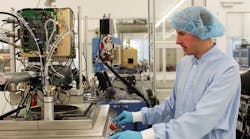The Internet of Things (IoT) is exploding with estimates of 25 billion connected devices online by 2020, up from 18 billion today. This trend of connecting physical devices is taking off and will change the way we do business, but it’s just in its infancy now. Innovation is happening in a lot of areas of IoT, from cybersecurity to hardware, but one area that doesn’t get as much attention is User Experience (UX). The right user experience creates value for end users by improving usability, accessibility, and interaction.
UX design generally involves a sequence of interactions between a user and a system, virtual or physical. Best practices have been pretty clearly laid out for UX based solely on web and mobile, but throwing in billions of physical devices makes things a little more complex. Here we’ll look into six reasons why designing UX for IoT is so difficult and how to overcome each challenge.
1. Diversity of interfaces and data points
Typically, an IoT solution needs to handle multiple data types from multiple devices on a user interface (UI) that flows seamlessly across interfaces. For example, an IoT solution at a solar power plant might aggregate data from the inverter, weather station, grid pricing, and more. The inverter and weather station would commonly involve “dongle” hardware with a processor and wireless communications chip to pull and send data through a gateway to the cloud. Grid pricing is generally pulled in from the utility via an application programming interface (API).
Once these multiple data types from multiple devices are together, the end user needs to access a simple yet informative visualization on any interface they want, like a phone, laptop, or on-site screen. Different users, such as an owner, financier, and technician, also should only have access to the information they need. With such diversity at many levels, UX design becomes incredibly complex for IoT solutions.








